How it works Lightning cable
The inner world of a difficult accessory.
The real scourge for owners of iOS devices is Lightning cables. There are many, they are different, but you can not choose all.
Let's figure out the device of this seemingly simple accessory with a whole arsenal of secrets.
In bondage Lightning
Apple has never hesitated to unilaterally come up with standards and transplant its users to them.
While mobile device manufacturers of the past decade have confidently sat on the type of charging sockets DC with a variety of plug diameters, Apple has chosen an interface for its iPods firewire.
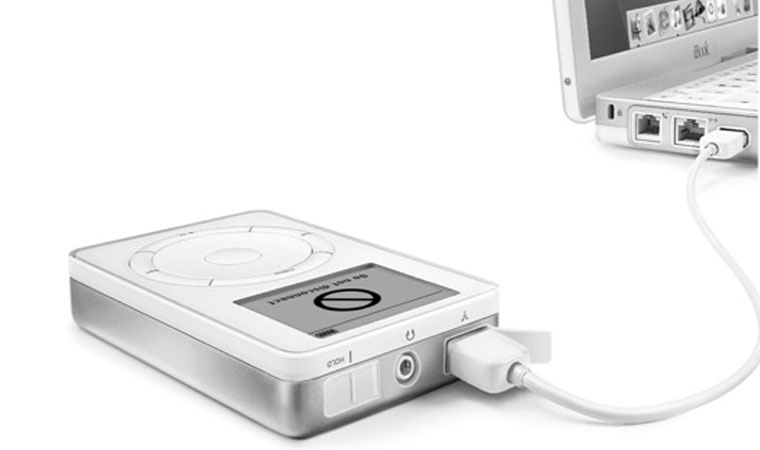
Apple met the smooth transition of thousands of brands that produce smartphones on miniUSB with a unique 30-pin port in the first iPhone.
Now the "single standard" in the world of mobile gadgets remains the connector microUSB with the prospect of being replaced by USB Type-C. Meanwhile, on iOS devices, he registered Lightning, and for a long time.
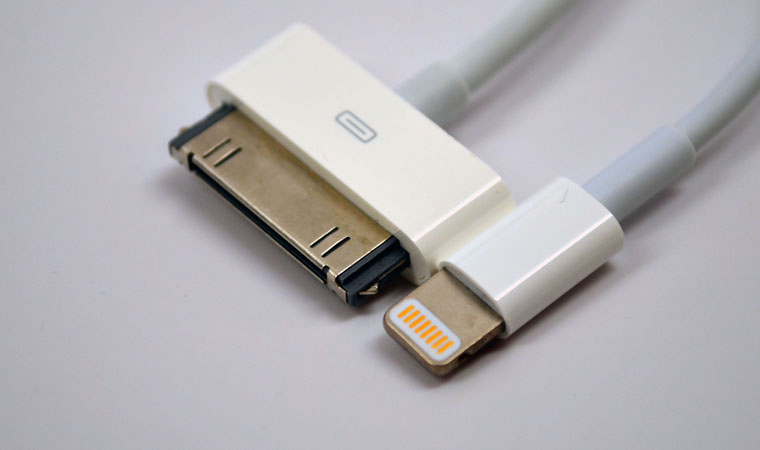
Finding a cable for recharging a “regular smartphone” is very easy. But Lightning - not so much. Therefore, among the owners of Apple technology, it is customary to take it with them.
The niche of "spare", consumable, travel cables for iPhone and iPad was promptly closed Chinese. Here is just one “but”: it is not so easy to fake them.
What's inside Lightning and why the original is expensive
To understand why Apple remains a company whose accessories sometimes seem unreasonably expensive can only be understood after a technical opening procedure.
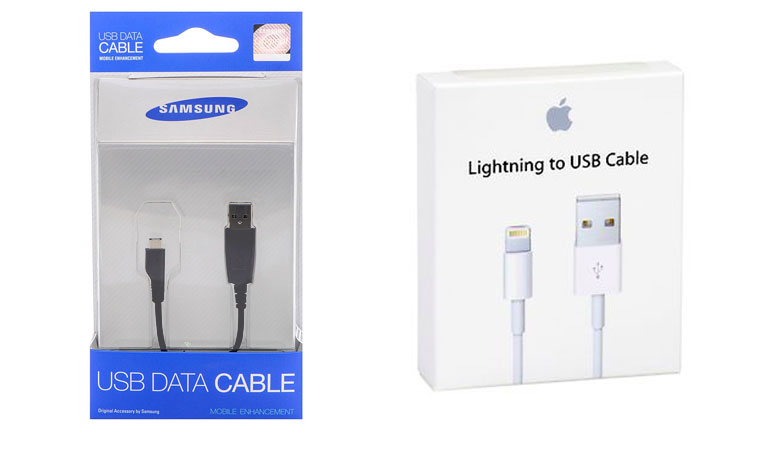
Note: we even breathe to Samsung. Just a comparison of the South Korean and American manufacturer.
Before us are two original accessories for smartphones from companies that have been the main competitors in the mobile device market for several years. The cost of the cable from Samsung is in the area 500 rubles. The original Lightning cable for iOS devices will cost 1590 rubles, 3 times more expensive.
Let's get a scalpel and try to figure out what is the reason for such a difference in price. I must say right away that Samsung plastic is cut very easily. And it’s not so easy to take a clip in Lightning with “bare hands” - powerful protection against penetration is provided.
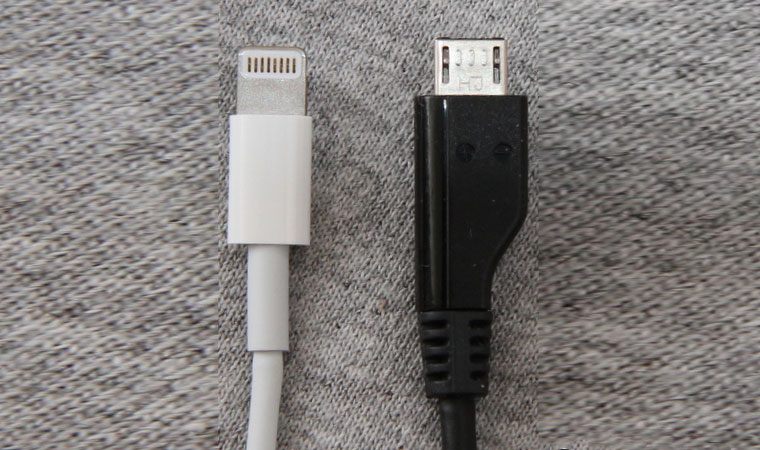
We get to the insides and observe.
The best board option that you can find in microUSB looks like this:
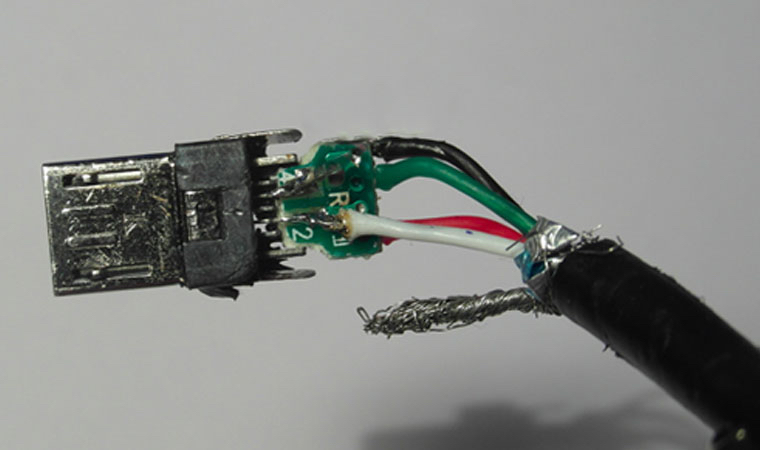
In the worst case (and it will be a really original cable, but from another manufacturer), you will not even see a voltage rectifier. Just four multi-colored wires with braided shielding (which is also often saved on).
After the torment of disassembling the original Lightning lace, we are greeted by this “inner world”:
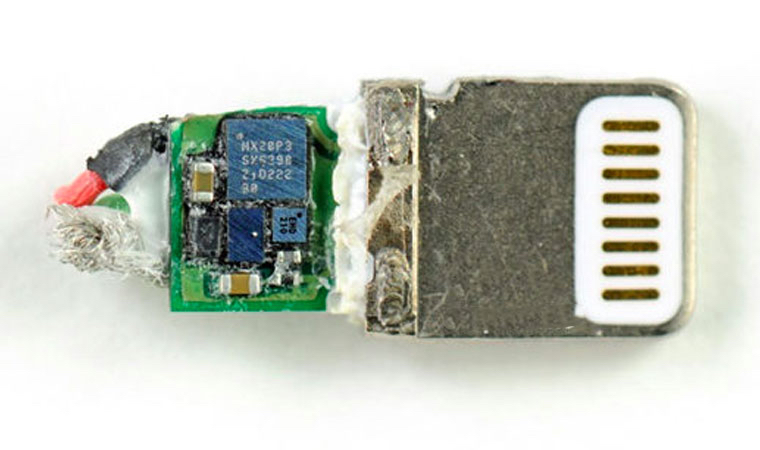
And a larger shot of the miniature board:
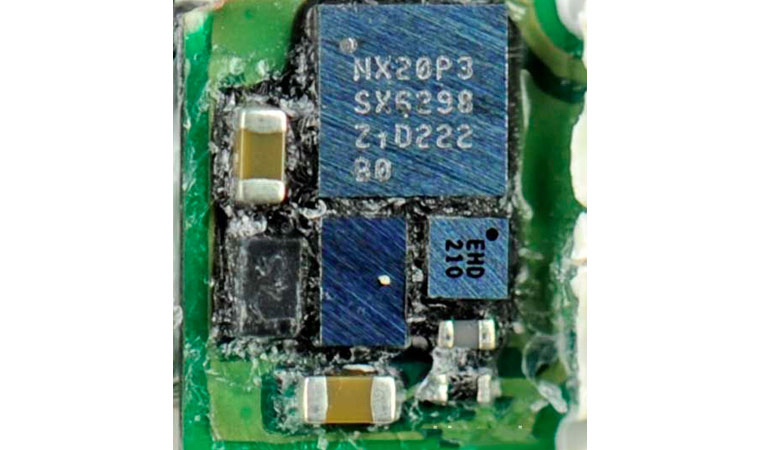
Hidden inside Lightning full microcomputer, which not only analyzes the entire process of recharging an iOS device, but also facilitates the operation of the accessory by the user.
And if until today you were puzzled by the cost of the original Lightning cable - now you know that it's all about the components and quality.
What happens inside Lightning and how it works
Under the protective metal cover of the Lightning plug is the circuit shown above. Of course, now we are talking about the original, and we will touch on the problem of Chinese consumer goods a little lower.
The board has four chips and several auxiliary computing devices responsible for transferring data to a computer and using a data connection cable. After connecting the iPhone to the charger, curious processes come to life inside this circuit.
The inner world of one of the chips
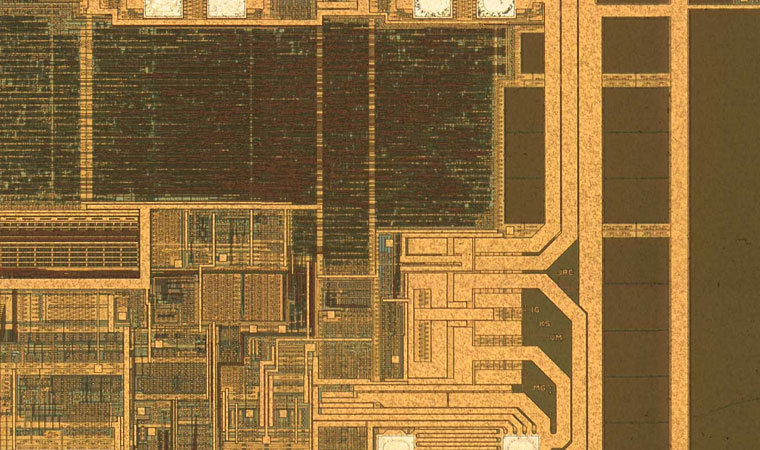
Two of the presented chips are very simple in design and consist of only a few transistors, the task of which is to convert the incoming electric current signal into a state that is most adapted to the battery installed in the smartphone.
Another chip with markings NXP NX20P3 provides control over the level of the current state of the battery, calculating the accumulated useful amount of charge.
The microprocessor installed in the cable helps to determine which side you insert the cable into the device connector.
The standard wiring for a Lightning cable looks like this:

And that's where Apple's magic comes into play. You do not need to think about which end to install the plug. Both the above microprocessor and the asymmetric placement of contacts are responsible for this.

Those. while you insert the cord, the filling automatically determines which pins to apply voltage to.
All these technologies are accompanied by dozens of patents that belong to Apple. But there is no limit to Chinese ingenuity: cables are faked with different accuracy and quality levels, they do not care about compliance with the law.
Therefore, Apple has provided for the protection of its accessories and has developed its own certification standard. MFI(Made for iPhone/iPad/iPod), and they decided to limit the connection of low-grade Lightning cables with one more, fourth chip, installed on the same miniature board of the original cord.
American Firewall against Chinese Lightning fakes
Hated by third-party accessory manufacturers, a chip with a number BQ2025. Without exaggeration, it can be called a "pass" to the bowels of the Lightning socket in the iPhone.
If there is no such chip on a non-original cable, the iOS device displays the following window:
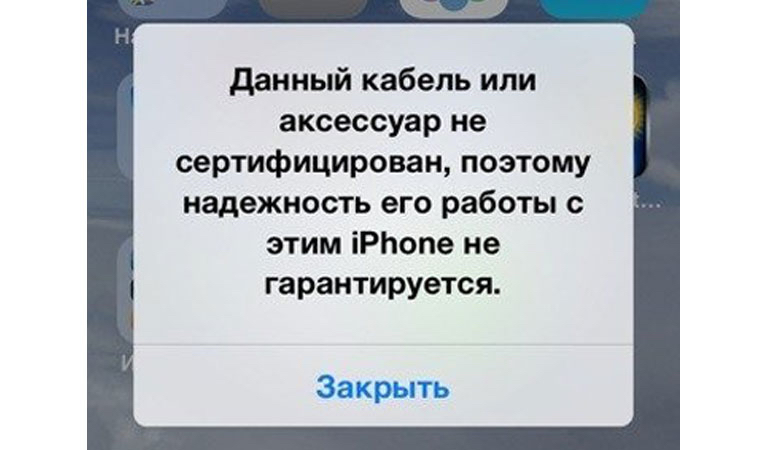
At this point, you can actually throw away the “short string”: it will not adequately (or at all) charge the device, it will not allow you to synchronize data.
Important: Why does the message "This accessory or cable is not certified" appear?
The BQ2025 chip has a special dedicated digital read-only memory block, for the manufacture of which semiconductors are used. His name - EEPROM. A feature of EEPROM is the ability to rewrite information multiple times (up to a million times).
The memory size of the EPROM block is about 64 - 128 bits, but this is quite enough to store the unique key of every iOS ecosystem accessory in the world.
This block contains a key that allows you to identify "originality" - compliance with Apple standards and confirmation of the presence of official MFI certification. When connected, the key on the accessory is mapped to the value base on the iOS device. If one is not found, an error message pops up and it is impossible to work.
Manufacturers of counterfeit cables were partially able to bypass the protection. As an alternative to EEPROM, artisan firms use emulator, which is based on microcontroller 8051. It bypasses Apple's protections, but is not durable, causing the cable to abruptly stop working with iOS.
One of 10 variants of Chinese creativity
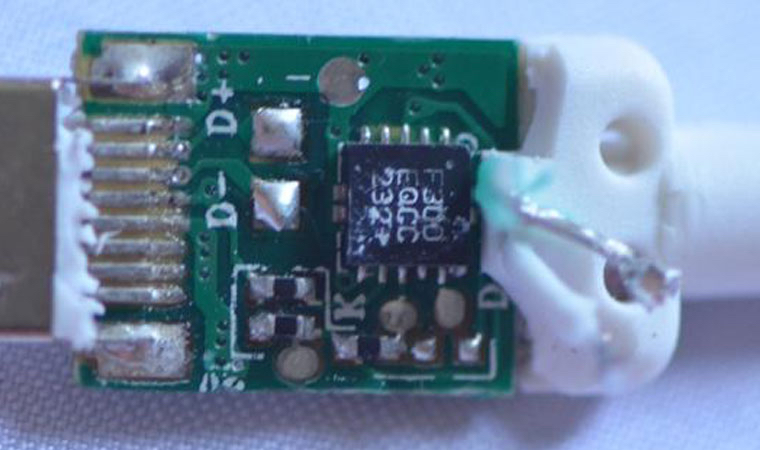
Any other company would become hostage to its own technology. Think for yourself. On the one hand, Apple can at any time start producing smartphones that will only accept original cables. On the other hand, there will be real chaos in the accessory market, and the original Lightning already purchased by users will become incompatible with the new generation of devices.
So it's good that Apple does everything in portions. The EEPROM area is easily overwritten during the next iOS update through the iTunes application. And very often, after flashing, Chinese Lightning refuses to work.
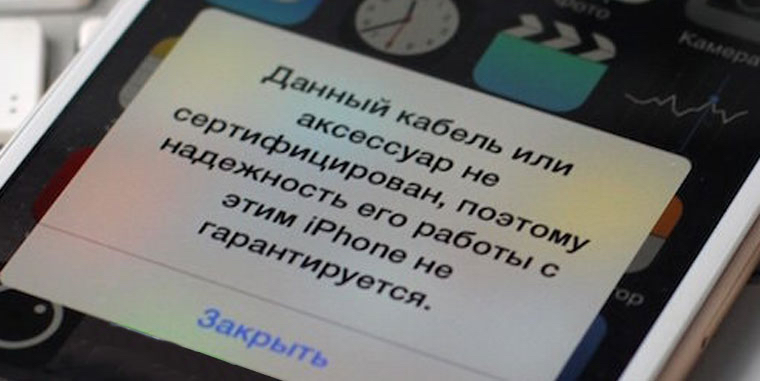
Add to that the DRM protection of multimedia files that the company so supports, and you can forget about the compatibility of non-certified accessories for displaying images and relaying music through the Lightning port.
Another problem that prevents anyone from starting the production of accessories is the inaccessibility and high cost of circuits. Remember the chip described above NXP NX20P3? The price of his scheme on the black market is $2,500!

And to start production, one scheme will obviously not be enough.
What is dangerous fake Lightning
Apple conceived the key system for a reason. In addition to income, they also thought about their reputation.
Have you often heard about exploding smartphones, bursting screens, leaking batteries and electric shocks when connecting the charger in the Android device environment? There are many such cases, they are not even paid attention to. There are only a few such situations in Apple technology, and each one causes a flurry of attention:
The main question is what accessory the victims used. In both cases - unoriginal. Do you understand now why this is so important?
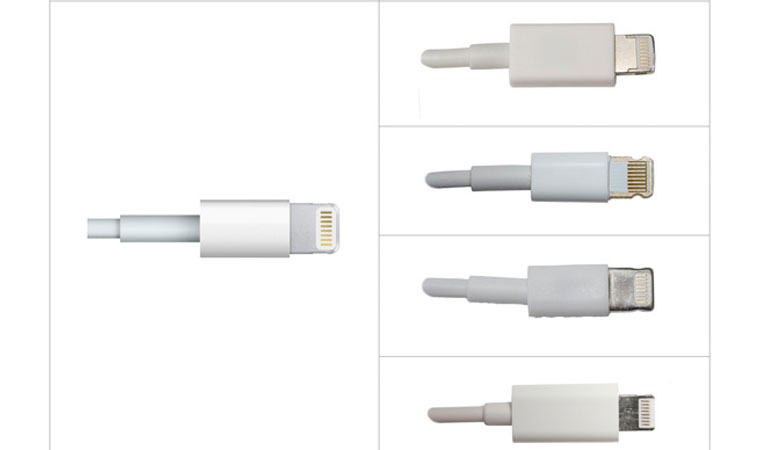
Where and who, I think, is clear without words
You need to look at the root of the problem. Before buying a low-quality shoelace from a Chinese site, think about the consequences. Using a non-original Lightning cable may cause:
- It quickly falls into disrepair. The braid cracks, the backlash of the plug appears.
- Complete loss of compatibility after the update, described above. The result is money down the drain.
- Well, if the iPhone just won't turn on. In the worst case, it can catch fire or explode from overheating. And, God forbid, during a conversation when connected to the network.
- The life of the original cable is many times longer than the fake. Saving? It just seems that over time, the cost of supporting the "ecosystem" of Chinese cables exceeds that of the original ones.
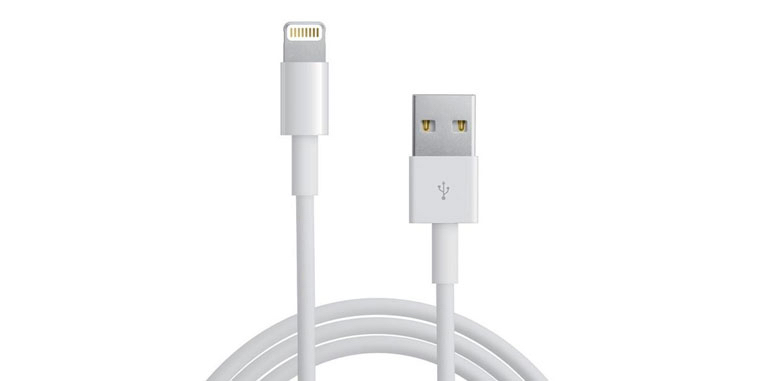
In short, the original is worth it. And even if for some reason you don’t want to take a cable specifically from Apple, you can always find a certified, high-quality alternative. Sometimes even with an interesting "trick".
For example: aluminum stylish cable uBear for 2,490 rubles; fabric braided cable Native Union BELT for 3,990 rubles, which will not get tangled and will not tie; fashion accessory from Belkin MIXIT - 2,590 rubles, which is not ashamed to get out of a travel bag; another "fabric" option from Maxco Lightning -
